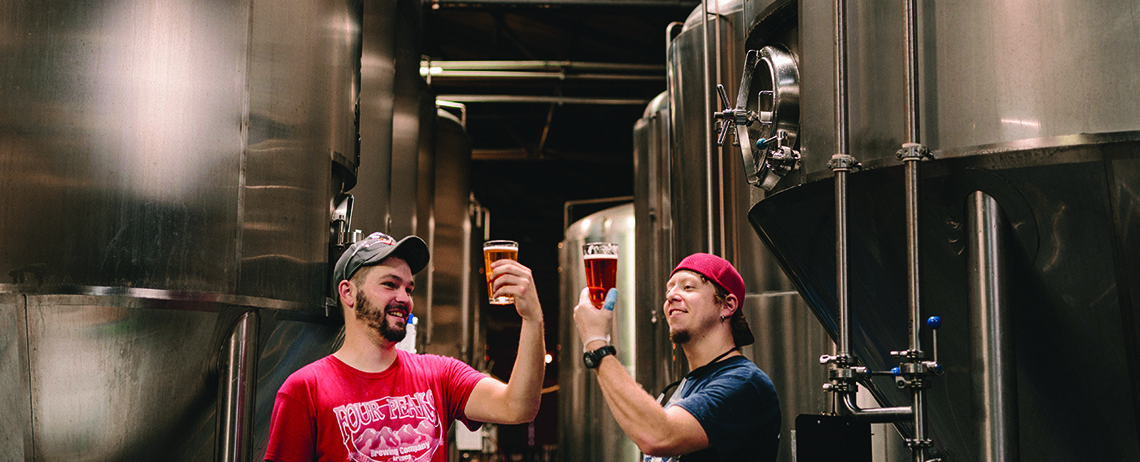Craft Breweries Team up for Better Safety on Site
SafetyCulture News | By | 5 Oct 2018 | 2 minute read

In the first half of 2018 independent craft beer production has risen 5 per cent in the US alone. Specialised brewing is a booming industry, as any trip to your local bar can tell you. But these small producers still have to shoulder the responsibility of keeping their staff and customers safe as they work with alcohol, gasses and fermentation, elements that are not always stable.
In 2012, an employee at a brewery in New Hampshire died when a keg exploded due to excess air pressure in the cleanout line because the line didn’t have an air regulator. That’s a worst-case scenario, but for craft brewers the hazards are numerous, and the penalties—beyond loss of life—are steep.
In the US the federal Occupational Health and Safety Administration (OSHA) pays close attention to the industry, with a Reuter’s analysis from 2013 showing the rate of serious violations at craft breweries between 2003 and 2011 was significantly higher than large brewers.
And in the period to the end of 2016, Bureau of Labor Statistics records show non-fatal injury and illness on the rise from 2011 to 2014 (160 to 530), and then a decrease to 2016 (330). Deaths are less common, although between 2009 and 2013 at least five people died in accidents at craft breweries.
In Ohio craft brewers want to get ahead of the problem and this week the state’s craft breweries partnered with OSHA to develop brewery-specific safety information. The partnership between the Ohio Bureau of Workers’ Compensation (BWC), OSHA, the Ohio Craft Brewers Association (OCBA), the Master Brewers Association of the Americas and the Brewers Association is aimed at education brewery owners and employees about best practice brewery safety.
The program will focus on issues such as grain handling, keg filling, chemical exposure, and bottling, canning and delivery.
“In addition to safety challenges common to all manufacturers, breweries face unique risks associated with material handling and difficult working surfaces as well as exposure to scalding liquids and electrical systems in wet areas,” Brewers Association safety ambassador Matt Stinchfield said in a statement about the new initiative.
“The alliance will unify efforts to support safety in Ohio breweries and we are optimistic it will also reduce injuries and increase business efficiencies.”
There are 278 craft breweries in operation in Ohio, with at least 65 more under development.
Ohio comes fifth in the US for craft beer production, the industry supporting more than 15,000 jobs and creating an economic impact of $2.6 billion.
“This alliance will help employers in Ohio’s budding craft brewery industry assess their workplaces and correct hazardous conditions that have the potential to cause injury.” Dr. Abe Al-Tarawneh, chief of BWC’s Division of Safety and Industrial Hygiene, said in the statement.
BWC will connect participating breweries to safety resources and programs available through its Division of Safety & Hygiene and OSHA On-Site Consultation program. And for their part, craft brewing associations will reach out to members and facilitate training across the state.
“Providing the resources and guidance to ensure a safe working environment for employees is a big part of OCBA’s mission to empower Ohio’s independent breweries to sustain and improve their craft,” OCBA’s executive director Mary MacDonald said in the statement.
It’s a step that makes sense for an industry that’s still young, but is also high-risk, with some inexperienced operators who might not know how best to manage those risks on their own. This is true whether a brewery is using spectrum brewing techniques or traditional methods.
Important Notice
The information contained in this article is general in nature and you should consider whether the information is appropriate to your specific needs. Legal and other matters referred to in this article are based on our interpretation of laws existing at the time and should not be relied on in place of professional advice. We are not responsible for the content of any site owned by a third party that may be linked to this article. SafetyCulture disclaims all liability (except for any liability which by law cannot be excluded) for any error, inaccuracy, or omission from the information contained in this article, any site linked to this article, and any loss or damage suffered by any person directly or indirectly through relying on this information.





